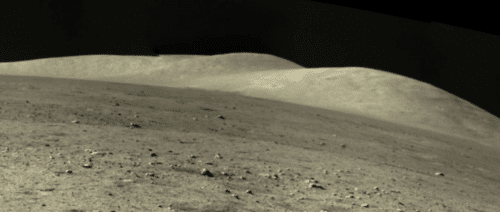The Chinese probe Chang'e-5 landed on the moon yesterday, and during the coming week it will bring back fresh soil samples for the first time since 1976

For the third time in seven years, a Chinese robotic spacecraft has landed on the moon - but this mission is particularly interesting. If the Chang'e-5 mission is successful, the probe will deliver fresh samples from the Moon to Earth for the first time in 44 years.
The Chang'e-5 lunar lander and launch system landed in an area known as the Oceanus Procellarium, near a mountain called Mons Rümker at 1513 UTC on December 1, 2020. The landing took place eight days after the launch of the spacecraft from the Wenchang Space Launch Center, and three days After the spacecraft stabilized in orbit around the moon.
In preparation for landing, the lander and the ascent vehicle separated from the spacecraft and descended to the surface. Chinese state television tracked the descent, culminating with what appeared to be a close-up view of the lunar surface from a camera aboard the lander.
The lander was supposed to begin using its on-board drill and robotic arm equipped with a shovel to collect samples of lunar rock and dirt within hours. The drill is capable of digging up to a depth of two meters below the surface.
CCTV-13 just ran this. #China #moon # Change5 pic.twitter.com/gxXBNr7mz6
- Jonathan Amos (@BBCAmos) December 1, 2020
In addition to digging up samples, Chang'e-5 will explore its surroundings using cameras and a suite of scientific instruments, including a ground-penetrating radar and a spectrometer. Because the entire mission is solar-powered, Chang'e-5 will need to complete its mission before lunar night begins on the near side of the moon in less than two weeks.
Now the main task will be to return the samples to Earth. After about two days of operations in the field, the mission controllers plan to launch the ascent vehicle above the lander, and bring up to 2 kg of material to Earth. If the mission is successful, these samples will be placed in the capsule attached to the spacecraft, which will begin its journey home. The capsule will be dropped for a parachute-assisted descent in the Inner Mongolia region of northern China when the spacecraft orbits the Earth in mid-December.
A successful completion would mark the first robotic return of lunar samples since the Soviet Luna 24 mission in 1976. NASA's Apollo lunar missions returned more than 380 kg of lunar rocks and soil. for research on the Earth between 1969 and 1972.
Samples from Mons Rumcar will be special because they are likely to be made of the freshest geological material ever brought back from the moon. The volcanic rocks in this area were estimated to have formed 1.2 billion years ago, very recent in geological terms. Such samples should shed new light on the evolution of the Earth-Moon system.
Thomas Zorbuchen, NASA's associate administrator for science, tweeted his congratulations to China and the Chang'e-5 crew. "Not an easy task," he wrote. "When the samples collected on the Moon are returned to Earth, we hope that everyone will benefit from being able to study this precious cargo that can advance the international science community."
The Chang'e-5 landing follows the Chang'e-3 mission in 2013, and the Chang'e-4 mission that made an unprecedented soft landing on the far side of the moon in 2019. This spacecraft was equipped with solar powered vehicles that transmitted data and images from the surface. The Chang'e-4 spacecraft is still working, almost two years after landing.

3 תגובות
What about an update? She was supposed to return to Earth already with the samples, right?
What's going on with the mission?
Update please!
Under the guise of a scientific mission, the Chinese are checking if there is anything worth going to the moon for.
They will not share any of the findings with the international scientific community, just as their previous mission with the landing on the dark side of the moon was defined as "national security" and they did not reveal anything about the details, except for a few pictures.
Wait and see.
"Bring fresh soil samples"?
It seems to me that there have been no colossal changes in the lunar soil in the last millions of years.